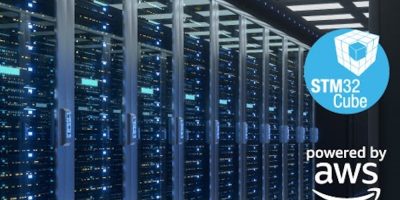Developer software for STM32-powered edge devices connects to AWS IoT Core
New developer software has been added to STMicroelectronics’ STM32Cube that are claimed to simplify connecting IoT devices to the AWS cloud. The X-Cube-AWS-H5 expansion package enables a seamless and secure connection to the AWS cloud, said STMicroelectronics. It contains a set of libraries and application examples designed for microcontrollers in the STM32H5 series, which act as end devices.
The software is built on the FreeRTOS open source, real time operating system and ST’s Secure Manager embedded security software. The recently announced STM32H5 Discovery kit is available for use with the X-Cube-AWS-H5 expansion package to allow developers to securely connect STM32H5-based prototypes to AWS IoT Core.
The STM32H5 is one of the most powerful Arm Cortex-M33 MCU series, said ST. Devices are factory-programmed with their own immutable identity and when combined with ST’s Secure Manager, it simplifies registering smart devices to AWS cloud. It also removes the need for costly infrastructure which would otherwise be necessary to keep the identities of IoT objects secret during their production.
Remote provisioning and administration of credentials will also be available via third-party service providers, during production of devices and in the field.
The isolation properties provided by Secure Manager enable multitenant IP protection to protect the intellectual property of multiple owners.
For edge AI use cases, models are running on the edge, on devices can be protected by the Secure Manager, and further trained and securely updated via the cloud. The STM32Trust TEE Secure Manager makes stronger security simpler, added ST. STM32H5 is the first MCU to support Secure Manager and targets PSA Certified level 3 and SESIP3 certifications.
The X-Cube-AWS-H5 is ready to download now.
STMicroelectronics is an integrated device manufacturer, which works with customers and partners to design and build products, solutions and ecosystems to enable smarter mobility, more efficient power and energy management, and the wide-scale deployment of the IoT and connectivity.




